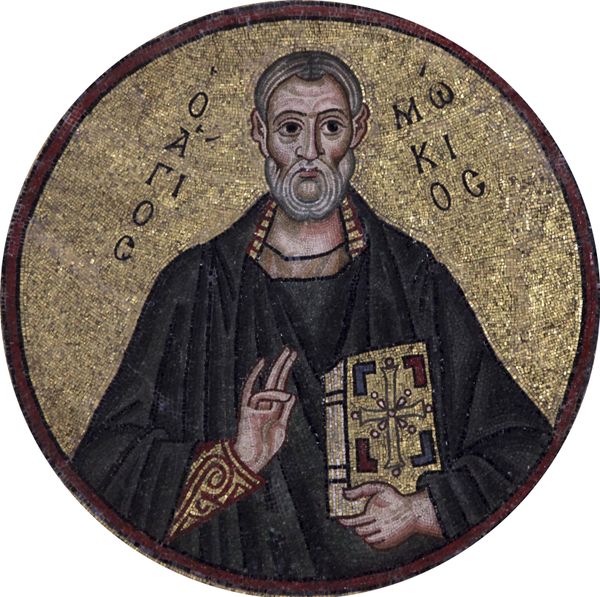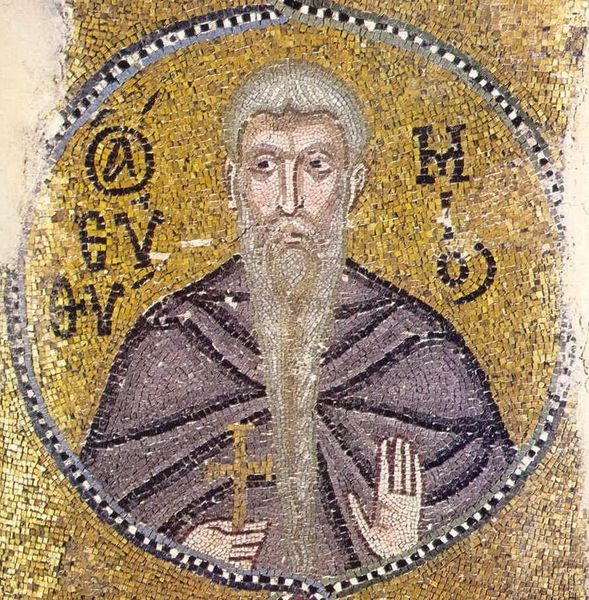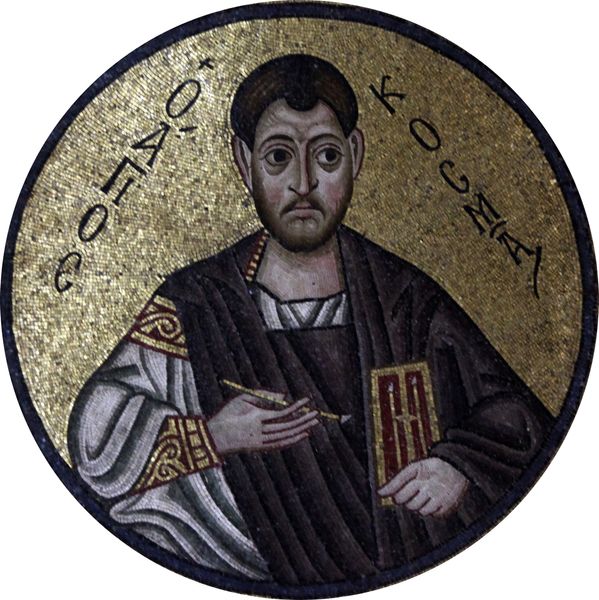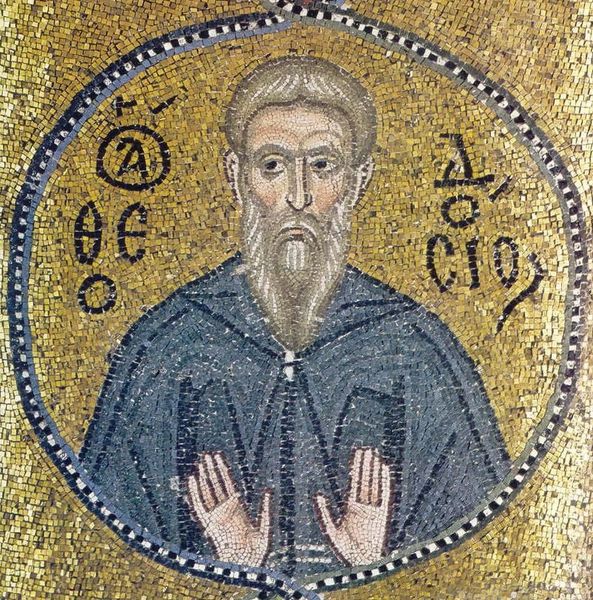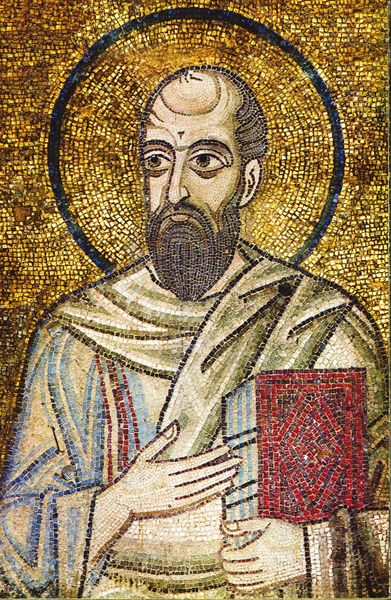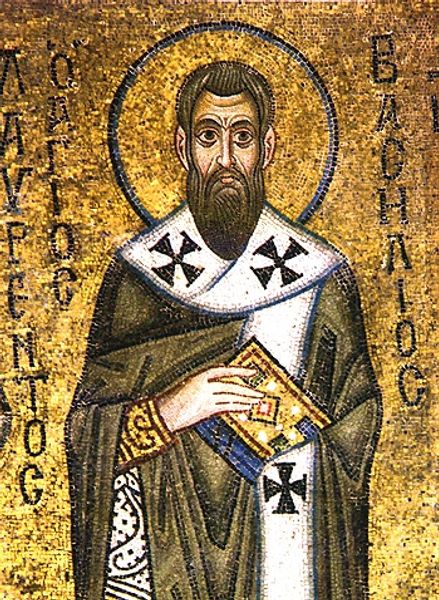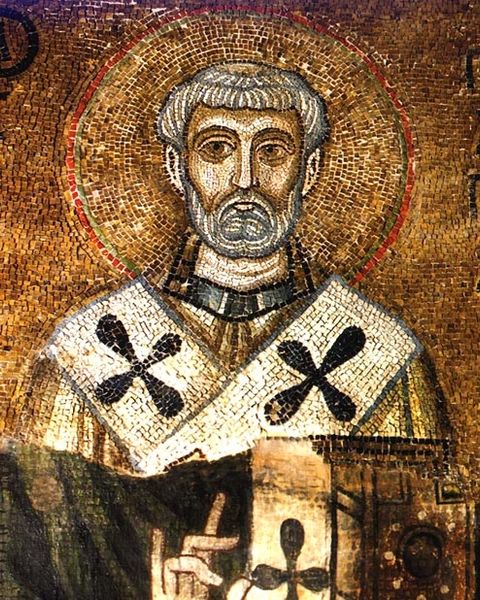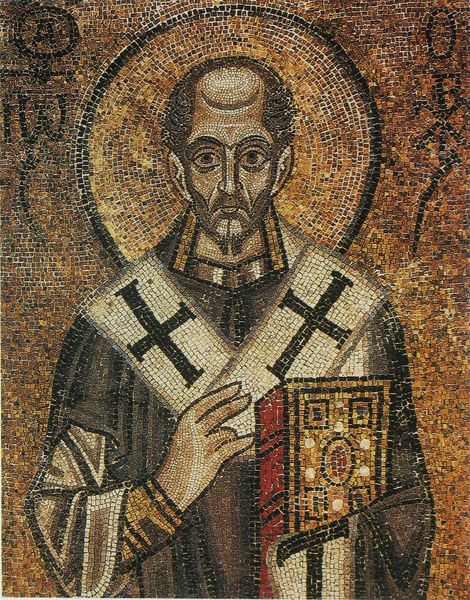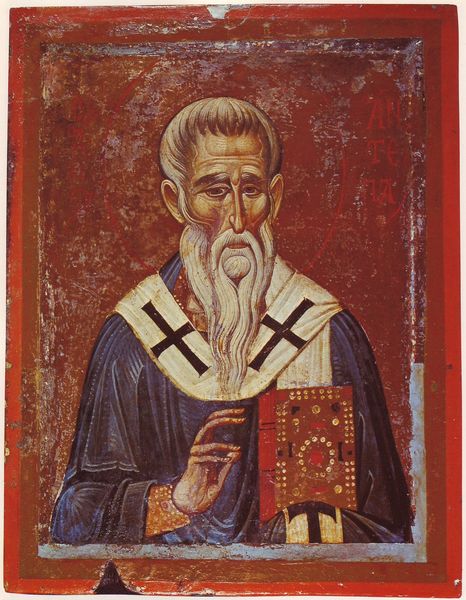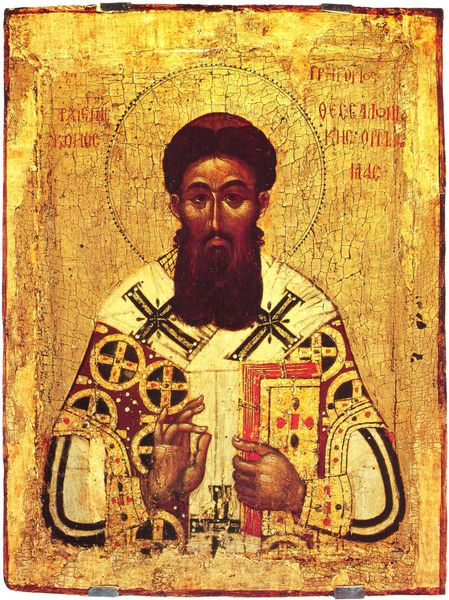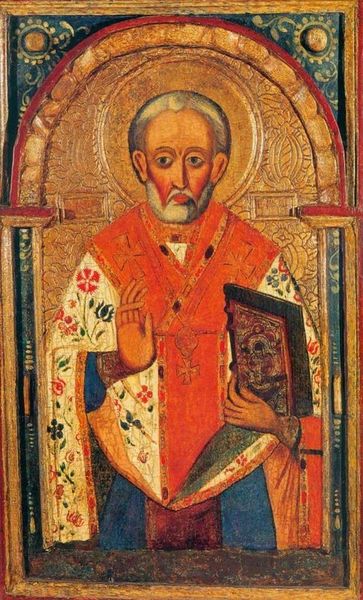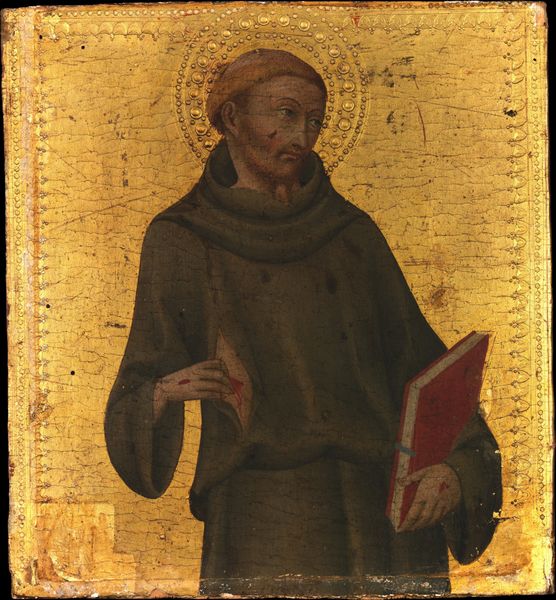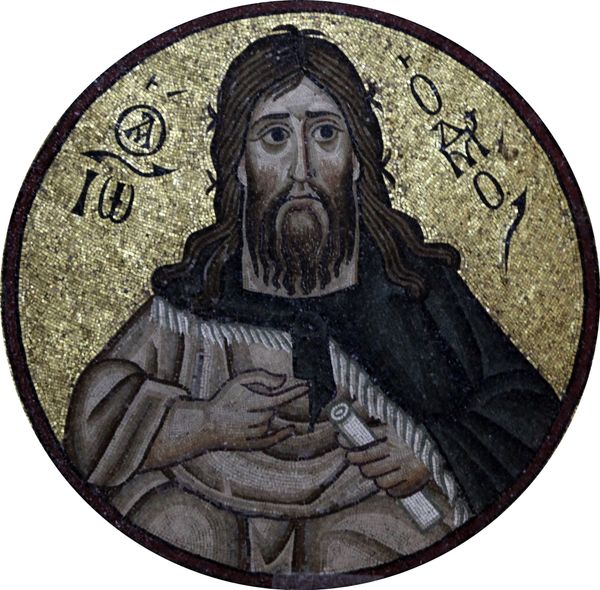
mosaic
#
portrait
#
mosaic
#
byzantine-art
#
medieval
#
prophet
#
figuration
#
portrait head and shoulder
#
portrait art
#
fine art portrait
Copyright: Public domain
Curator: Here we see "S. Kyros", a mosaic portrait created around 1025, found at the Hosios Loukas Monastery in Greece. Editor: Immediately, the aged but serene face captures attention. It evokes such quietude, yet feels commanding—a stoic countenance rendered with simple grandeur. Curator: Indeed. Consider the precise placement of each tessera, a meticulous orchestration of light and shadow that sculpts Kyros' face. The Byzantine artists here harness the mosaic medium to generate form, not through fluid lines, but angular shifts, defining the iconic features. Note also the use of gold leaf background; a formal device to denote divinity, timelessness, and status. Editor: The subject, Kyros, identified by the inscription beside him, lived within a deeply hierarchical society structured by religious orthodoxy, doesn't he? His halo signifies spiritual authority; his garb a life dedicated to asceticism. But to what degree is this depiction used as social and religious justification during that period? Does it elevate him as an idol or to truly celebrate him? Curator: I concede your point regarding social context, and certainly his image performs an ideological function, especially when considered as an expression of Byzantine authority and spiritual validation. Yet, my focus would be on what emerges out of its formal structure; the symmetrical composition of the mosaic itself, the deliberate positioning of the figure, creating a sense of divine stillness, a harmony achieved not through illusionism, but rather deliberate artifice and symbol. Editor: I agree with you about the visual harmony. We also need to contemplate what this symbolic projection signified to different members of that medieval community. Not just those in power, but to the pilgrims visiting this site? Does Kyros exemplify the socio-political expectations or personal experiences of those viewing the image in antiquity? Curator: I suppose the interplay between form and historical interpretation remains inexhaustible. The artistic and the social realms exist, ever informing one another, within every reading. Editor: Precisely. This work gives a tangible glimpse of spiritual identity intertwined within an ever changing and complex socio-political medieval world.
Comments
No comments
Be the first to comment and join the conversation on the ultimate creative platform.
